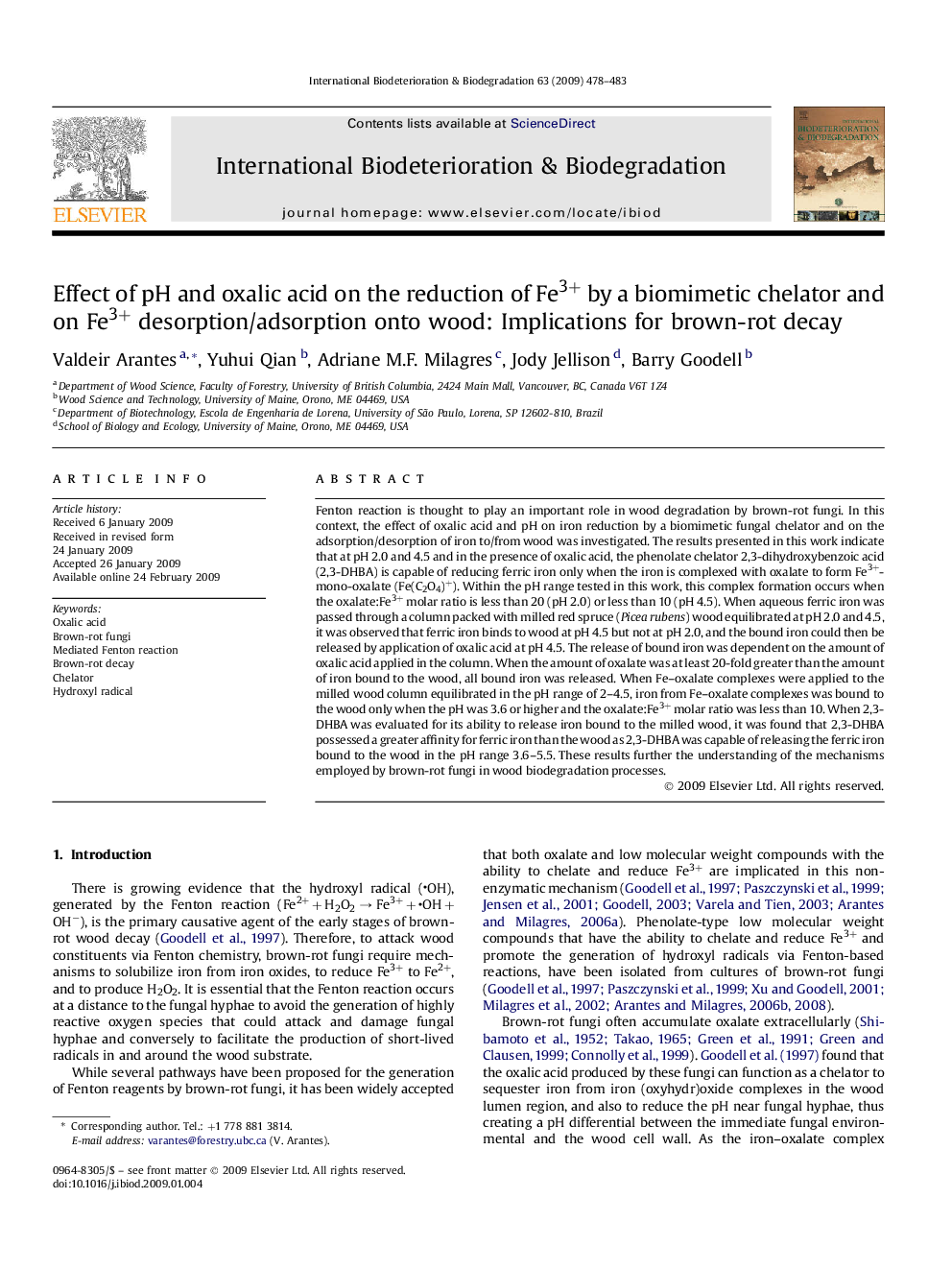| کد مقاله | کد نشریه | سال انتشار | مقاله انگلیسی | نسخه تمام متن |
|---|---|---|---|---|
| 4365415 | 1301758 | 2009 | 6 صفحه PDF | دانلود رایگان |

Fenton reaction is thought to play an important role in wood degradation by brown-rot fungi. In this context, the effect of oxalic acid and pH on iron reduction by a biomimetic fungal chelator and on the adsorption/desorption of iron to/from wood was investigated. The results presented in this work indicate that at pH 2.0 and 4.5 and in the presence of oxalic acid, the phenolate chelator 2,3-dihydroxybenzoic acid (2,3-DHBA) is capable of reducing ferric iron only when the iron is complexed with oxalate to form Fe3+-mono-oxalate (Fe(C2O4)+). Within the pH range tested in this work, this complex formation occurs when the oxalate:Fe3+ molar ratio is less than 20 (pH 2.0) or less than 10 (pH 4.5). When aqueous ferric iron was passed through a column packed with milled red spruce (Picea rubens) wood equilibrated at pH 2.0 and 4.5, it was observed that ferric iron binds to wood at pH 4.5 but not at pH 2.0, and the bound iron could then be released by application of oxalic acid at pH 4.5. The release of bound iron was dependent on the amount of oxalic acid applied in the column. When the amount of oxalate was at least 20-fold greater than the amount of iron bound to the wood, all bound iron was released. When Fe–oxalate complexes were applied to the milled wood column equilibrated in the pH range of 2–4.5, iron from Fe–oxalate complexes was bound to the wood only when the pH was 3.6 or higher and the oxalate:Fe3+ molar ratio was less than 10. When 2,3-DHBA was evaluated for its ability to release iron bound to the milled wood, it was found that 2,3-DHBA possessed a greater affinity for ferric iron than the wood as 2,3-DHBA was capable of releasing the ferric iron bound to the wood in the pH range 3.6–5.5. These results further the understanding of the mechanisms employed by brown-rot fungi in wood biodegradation processes.
Journal: International Biodeterioration & Biodegradation - Volume 63, Issue 4, June 2009, Pages 478–483